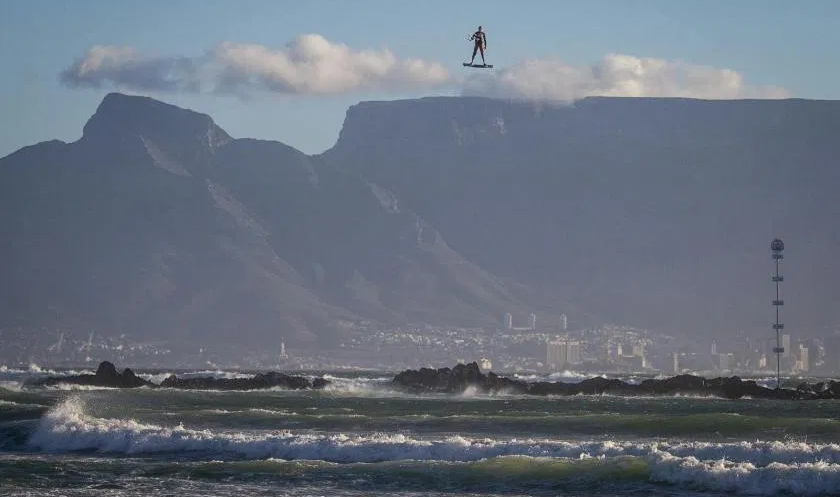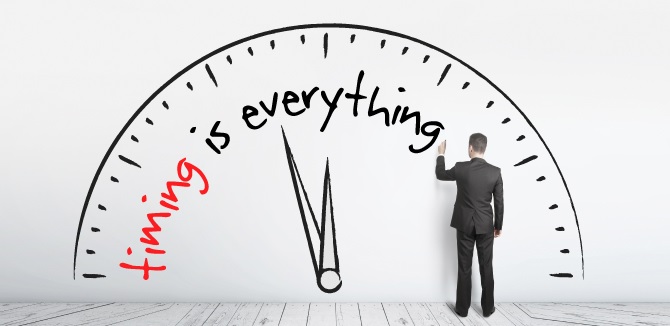Learn how to jump higher kitesurfing & improve your Woo score
In this blog post we’re going to talk about how to jump using the kite & then go onto improving technique and bettering your WOO score as the blog goes on.
Scroll down if you can already do the basics well to the ‘How to jump higher kitesurfing’ section. Although it’s sometimes worth taking another look to see how you can improve your base technique.
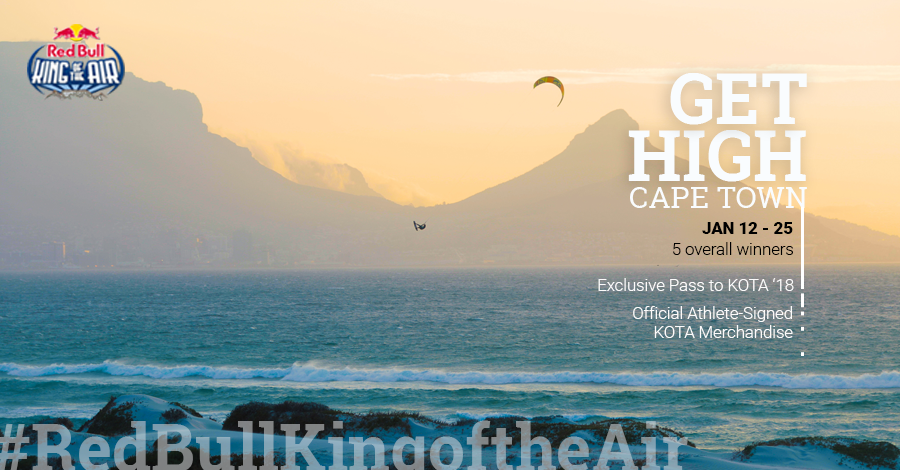
As I’m sure many of you have seen from YouTube videos, the heights that can be achieved through these jumps can be dizzying, and is one of the defining features that really sets kitesurfing apart from other water sports.
So much so that Red Bull have created their own sports event dedicated to a particular type of jump; the infamous megaloop. However, before we have you jumping higher than your house, lets start with the basics.
A few safety considerations to make before you head out or learn to jump higher….
Give yourself plenty of room, both from other riders and any obstacles. When you jump, you will travel with the wind, so it’s particularly important to make sure there are no riders downwind of you, and that you are well upwind of the beach.
Don’t jump beyond your capability and confidence. Like when learning anything in kitesurfing, stay patient, take your time, and enjoy the learning process. This will ensure you progress with a good technique whilst staying safe and most importantly learn how to land properly before going too high, or it can be painful!

Always make sure your equipment is in good order. It’s a good habit to get into to checking your gear for damage before you go out riding, especially your lines and bridles. And ALWAYS check that your safety systems are working before you head out.
So let’s assume you’re now riding confidently with good upwind ability.
Firstly, make sure you have a reasonable amount of power, enough to ride upwind comfortably but not so much that you’re likely to lose control or be pulled off your edge. We want to leave the water but not into orbit while learning!
Getting airborne is the easy part, maintaining control while in the air and landing softly is the key though. Then you can confidently get higher and higher knowing you’ve the skills to land it without injuring yourself.
Creating ‘POP’ – The Take Off
Once you’re happy with the power from your kite, ride across the wind as if on a normal tack with your kite at either 1 or 11 o’clock. Increase your speed slightly and edge harder to check how much power you have from the kite. If you have plenty of pull then progressively edge harder still until you’re creating a big spray from the back of the board. You really want the spray to be around head high to have any chance of creating a good POP.
Take a look at this video to show the progressive edging and then final explosive thrust from your back leg. This is what makes the difference between going forwards and falling on your face, or going upward into a jump. Without the edging and take off, there is no way you can jump no matter what you do with the kite. So spend some time practicing this progressive edging and release from the water. The board tends to create a suction with the water while riding so this ‘POP’ technique also breaks that suction.
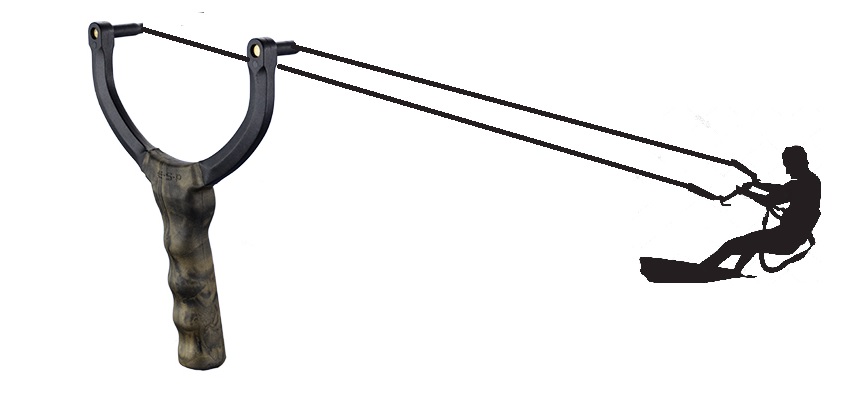
While edging, you’re also building up the tension in your lines, so when you do start to use the kite for lift, you’ve created a kind of catapult affect between yourself and the kite due to that high amount of tension.
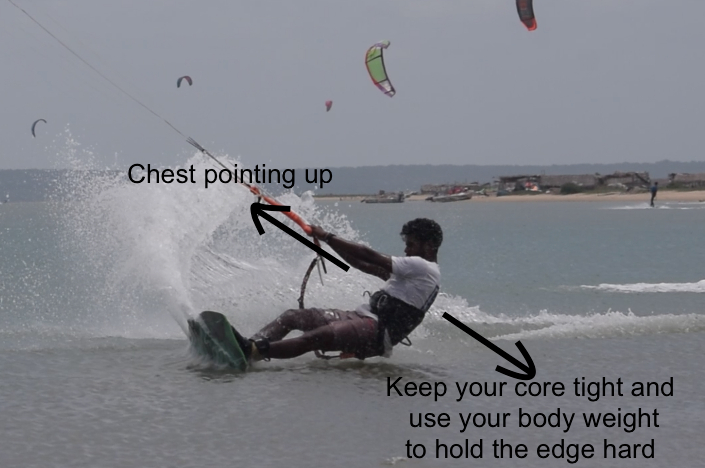
The video shows why the board speed going into the trick is important as if you don’t ride fast enough with power then as you begin to edge you’ll quickly come to a stop.
You’ll notice the rider does a little hop beforehand, so he can jam the rail of the board into the water even hard with all his weight, we’d suggest leaving this part out until you’re a little bit more advanced as it could end it a very fast crash!
The key to POP is pushing down hard with your back foot to create a spray from your board but in just a fraction of a second. The amount of pressure needed from your leg is high, so imagine you’re trying to push your back foot through the board while ‘loading it up’ or if you were stamping on a cardboard box, or tin can, and then when you can push no more, lift your front foot up to break the suction the board has between its base and the water. All in a moment, the tension you’ve been building up in the lines along with the flex from the board rebounding back to it’s original shape will suddenly catapult you forwards as the board leaves the water.
Tuck your knees up slightly in flight and point the board straight down wind for the landing as you’ll like be landing fairly fast. This will allow control of the board without having to engage an edge until you’ve run off a bit of the speed.
This is something that can be practised without moving the kite at all, and is worth spending some time on it as it’s the most important the part. The rest is just steering the kite and timing.
Common Mistakes While Learning to Jump High Kitesurfing – POP Errors!
- Not Enough Weight On The Back Foot – Most kitesurfers struggle with POP because it’s hard to imagine how much pressure is needed through the back foot. Around 90% of your weight should be pushed through it with a lot of force from your muscles.
- Not Enough Speed – If you were to do this at your normal riding speed, you’d quite quickly come to a grinding halt, so extra speed / power from the kite is needed.
- Not Enough Power – We do suggest learning with minimal power, but you do need some extra pull as otherwise it doesn’t let you build the right amount of speed. Too little power and it will make the trick more difficult, it’s a happy medium that’s needed.
- Lean Back – To create enough the build up of tension in the lines, you do really need to be leaning back a fair amount as in the photo above. Trust in your harness to hold you and your fins to grip.
- Edging too slowly – The whole POP process should just take less than a second. Edging too slowly will just slow your board speed down and not build tension in the lines. It needs to be a quick fast push on the back foot to create the spray, tension in the lines and ultimately POP.
The Kite – So You’ve Mastered POP??
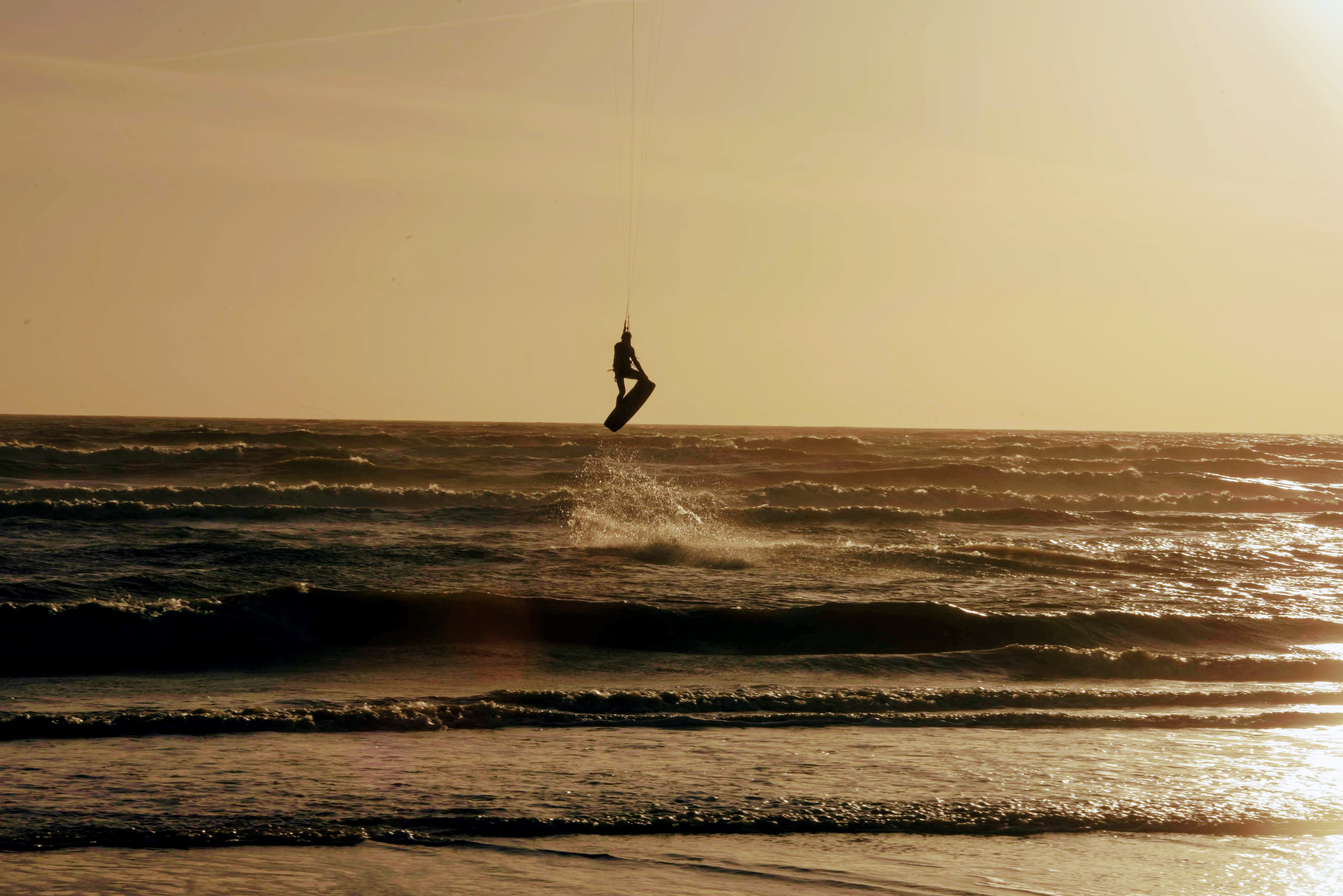
The kite is actually the easy part, POP is the hard bit. If you’ve mastered POP properly then you’re well on the way to learning to jump and trick.
The kite generates the majority of the lift in a jump and it does so in the same way it creates power to accelerate you forwards, by moving across the wind window.
For a jump, it’s just moving across the part of the wind window which creates lift, above your head…..
So you’re riding along with the kite in a normal ‘parked’ position of 10 or 2 o’clock. You start loading your edge to begin your POP and just as you build up the tension in the lines and rail of the board, it’s time to start sending the kite backwards, over your head.
The kite is aiming to go from 10 o’clock (or 2 o’clock dependent on which tack) through 11, 12 and finishing at around 1pm. So the movement of the kite is high above your head and not at all in front of you. This is a drastic change in direction from where it was so there does need to be some firm input into the bar.
Until now the bar has been in a normal position, somewhere around 4 – 6 inches away from the chicken loop, so the kite is responsive but not fully powered up.
As the kite turns backwards from 10 to 11 o’clock, this is the point the board should be released from the water signalling an end to the POP and simultaneously you’ll pull in the bar for full power. The catapult affect from POP, direction change from the kite creating upwards lift and fully powering the kite up by pulling in the bar all combine to get you airborne. 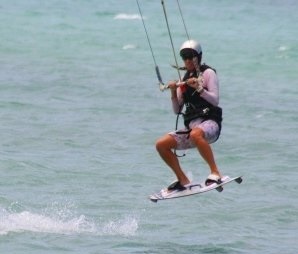
When in the air the same position should be adopted as when performing POP, knees tucked up with the board directly in front of you with the aim of landing directly downwind. Engage your core and this gives much better stability while in the air.
You should start practising with only a moderate amount of power in the kite and gradually increase as you become more confident.
While airborne what should you do with the kite? Nothing. Keep it at 1pm with the bar all the way in for full power (and therefore lift) as it’s essentially working like a parachute.
Common Mistakes While Learning to Jump – The Kite
- Sending the kite too early – Pull too early or too hard on your back hand and the kite will create lift and forwards pull before you’re able to build the tension in the lines from edging / POP. You’ll be pulled forward at a rate or knots but not generate any height. This is a common mistake as riders believe if they’re more aggressive with the kite they’ll more lift and height, but in reality, without the POP, you’re going nowhere other than forwards, very fast.
- Ride too fast – Ride too fast and it’s hard to engage the edge of the board and create good POP, the board will skip and the same error will happen as above.
- Don’t edge enough – If the board isn’t edged enough or released from the water well, again you’ll fly forward without generating any height. It’s sometimes easier to try and find a little wave or piece of chop to edge up as it helps hold an edge with extra power from the kite.
- Letting the bar out – While learning, it’s often natural instinct to let the bar out as you’re hauled off the water, to decrease lift and power, but don’t do it, you’ll drop out the sky! Keep it in and float down, even if you abort the landing and land on your bum.
The Landing
The landing is probably the most important part of the jump and it’s where you could potentially injure yourself if not learnt correctly.
Kitesurfers often learn to jump with more power and aggression and therefore get more height before they’re able to land properly and consistently – it’s just a recipe for disaster!
The landing is essentially the same as a take off but in reverse, and it needs to create the same amount of lift with the kite or you’ll drop like a stone.
In The Air – Coming In To Land
You’re in the air, knees tucked up and are losing height as you’re coming back down towards the water. As you do so you need to steer the kite back from 1pm through, 12, 11 and eventually 10am as you touch down, while keeping the bar in the whole time. As you hit the water you can let the bar out to decrease power and regain control of your board speed.
It’s essential to do this movement with as much input into the bar as the take off, as you need the kite to create a lot of lift, otherwise you’ll crash down hard. Remember, the kite is still going over the top of your head and skirting around the edge of the wind window, without ever creating any forward pull. This helps you from landing with too much speed.
It’s not unusual to actually start travelling up slightly again or at least staying horizontal. This is a good thing as it’s a sign you’re creating plenty of lift.
As you come in to land, keep your legs slightly bent to absorb the impact and point the board straight downwind so you’re heading towards the kite. This will allow you to check your speed but will also take tension out of your lines so you’re easily able to control the power of the kite.
Just remember, this maneuver takes up a lot of space, even if you don’t travel far in the air, you need a lot of landing space before you’re back in full control and continuing along your track.
Learn How to Jump Higher Kitesurfing – The Timing
Everything about the jump and how successful it is comes down to the timing and how all the actions are tied together in sequence, with perfect execution.
During take off, the POP and board release from the water needs to tie in with the kite being sent backwards and bar being pulled in. During landing the kite needs to be sent back again with the bar in and board pointed downwind. The key for the landing is deciding when you need to start sending the kite back again to create the lift and give you a soft landing. Only you can figure out how quickly you’re falling and when you need the kite, but generally when you’ve fallen about 60-70% of the jump height, you need action the kite promptly.
If it’s a small jump while you’re learning, the kite may need to be redirected from the take off movement immediately and not held at 1pm (or 11am dependent on direction)
This video created by one of our ex instructors is well worth a watch.
Common mistakes
- Riding speed – it’s essential to go into the trick fast enough that when you edge to put you don’t just kill all board speed and come to a stop but it’s just as important to not ride too fast. If you ride too fast you’ll not be able to hold the edge for long enough and again will ruin the board release from the water. A comfortable riding speed (10 – 15 mph) is ideal to begin with.
- POP & Board Release – Lets be honest, who hasn’t seen someone trying to jump that goes about 30cm into the air and 25m down wind? Everyone has! It’s the most common mistake when jumping and it’s all down to the take off. If you don’t hold the edge of your board in the water for long enough you can’t build the tension in the lines and upwards lift so the kite will swing across the window which will end with you being pulled forwards very fast and not going very high! To remedy this, ride a little slower, hold the edge for longer and only release when you feel the kite heading back over 12 o’clock, which will then be generating upwards lift. Using a small wave or kicker to aid this can also be very beneficial.\
- Rotating in the air – These rotations are generally caused by an uneven take off or from edging too hard upwind, so it is important to try and get the board to release from the water all in one and without twisting too much. This is most easily performed by lifting your front foot up quite hard so that it breaks the suction of the board to the water. The advantage this gives is that it allows you to control when you want to take off exactly. Another way to stop rotating once in the air is to tuck your legs up close to your chest, and tense your core muscles. This will give you a lot more stability and allows a lot better control. It should stop you spinning once air born and remove the ‘dangling’ feeling under the kite. Your body will always follow where your head is going, so if you’re rotating, use your head to stop the rotation or to turn you back in the other direction.
- Falling out the sky! – It’s actually relatively easy to jump and get quite high, but the hard part is controlled and gentle landings. It’s better to get the landing dialed before going to high as we’ve seen some pretty horrific injuries from heavy landings! The redirect is as important as the initial directional pull to create the take off. As you come in to land, don’t be afraid to steer the kite reasonably hard as it has a long way to go across the window in a short period of time. That movement is what is creating the lift to soften the landing. As you improve and begin going higher you can introduce the downloop landing (see below) for even more lift.
Developing your ability to jump will unlock lots of potential for tricks and fun.
So give it a go, progress steadily, and ride safe.
How To Really JUMP & Improve Your Woo Score
Now you’ve learned the basics, it’s time to look at getting higher with more control and softer landings.
Here we look at ways to ride in stronger winds and get past the double figure mark on your WOO.
To be continued…..

